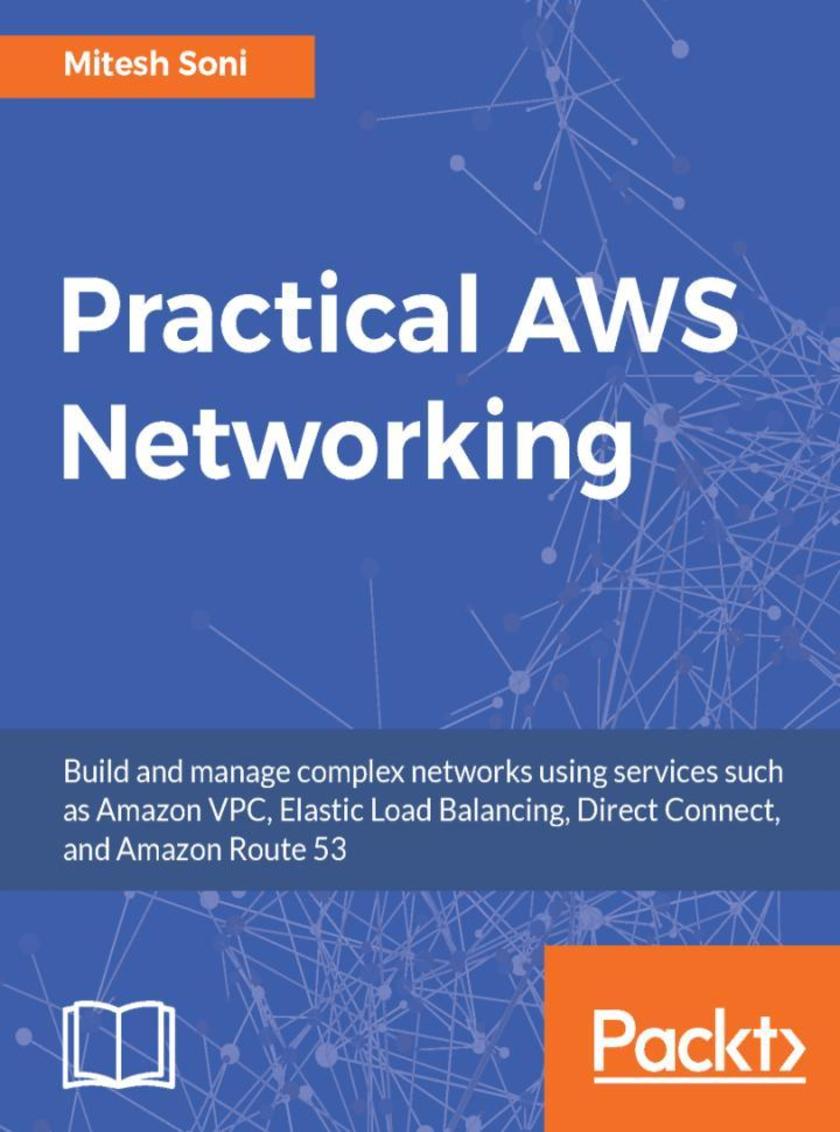
Practical AWS Networking
¥73.02
Your one step guide to learn all about AWS networking. About This Book ? Master your networking skills on Public Cloud. ? Gain hands-on experience of using Amazon VPC, Elastic Load Balancing, Direct Connect and other AWS products. ? Implement troubleshooting skills and best practices for security on AWS network. Who This Book Is For This book is targeted towards cloud architects, cloud solution providers, or any stakeholders dealing with networking on AWS Cloud. A prior idea of Amazon Web Services will be an added advantage. What You Will Learn ? Overview of all networking services available in AWS. ? Gain Work with load balance application across different regions. ? Learn auto scale instance based on the increase and decrease of the traffic. ? Deploy application in highly available and fault tolerant manner. ? Configure Route 53 for a web application. ? Troubleshooting tips and best practices at the end In Detail Amazon Web Services (AWS) dominates the public cloud market by a huge margin and it continues to be the first choice for many organizations. Networking has been an area of focus for all the leading cloud service providers. AWS has a suite of network-related products that help to perform network-related task in AWS. This book initially covers the basics of networking in AWS. Then we use AWS VPC to create an isolated virtual cloud for performing network-related tasks. We then provide an overview of AWS Direct Connect after taking a deep dive into scalability and load balancing using Auto scaling feature, Elastic Load Balancing, and Amazon Route S3. Toward the end of the book, we cover some troubleshooting tips and security best practices for your network. By the end of this book, you will have hands-on experience of working with network tasks on AWS. Style and approach A step by step practical guide that helps you use all networking services available in AWS effectively.
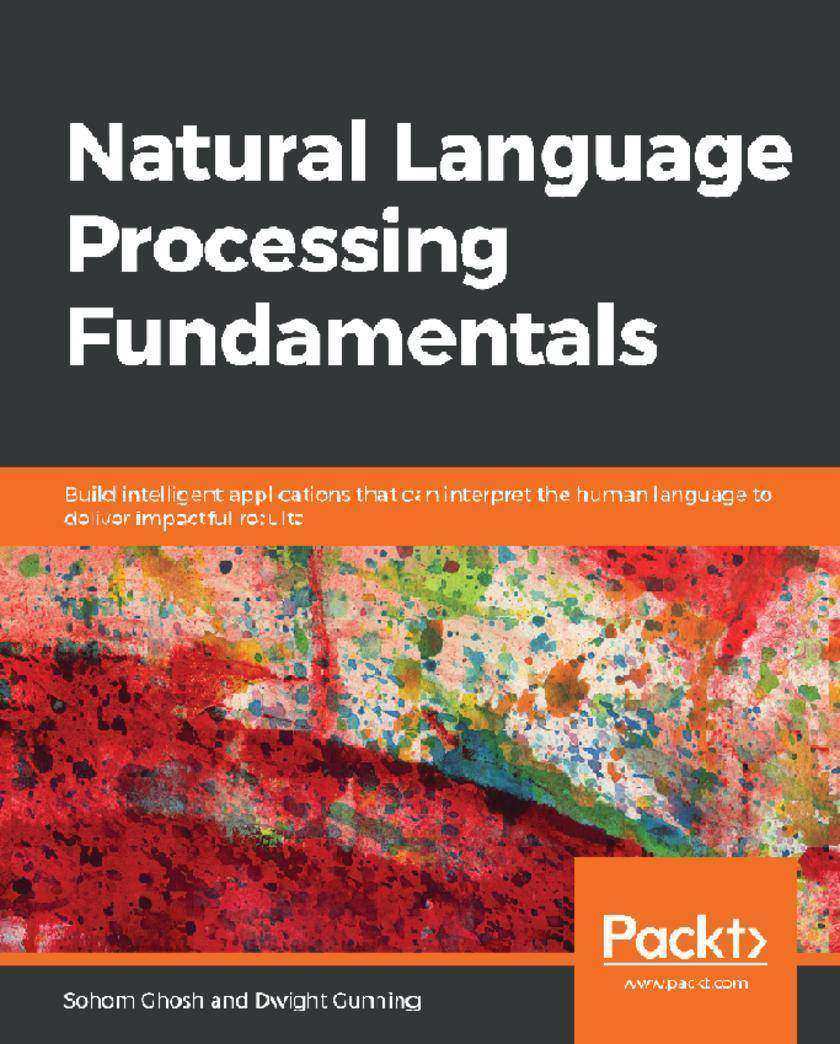
Natural Language Processing Fundamentals
¥73.02
Use Python and NLTK (Natural Language Toolkit) to build out your own text classifiers and solve common NLP problems. Key Features * Assimilate key NLP concepts and terminologies * Explore popular NLP tools and techniques * Gain practical experience using NLP in application code Book Description If NLP hasn't been your forte, Natural Language Processing Fundamentals will make sure you set off to a steady start. This comprehensive guide will show you how to effectively use Python libraries and NLP concepts to solve various problems. You'll be introduced to natural language processing and its applications through examples and exercises. This will be followed by an introduction to the initial stages of solving a problem, which includes problem definition, getting text data, and preparing it for modeling. With exposure to concepts like advanced natural language processing algorithms and visualization techniques, you'll learn how to create applications that can extract information from unstructured data and present it as impactful visuals. Although you will continue to learn NLP-based techniques, the focus will gradually shift to developing useful applications. In these sections, you'll understand how to apply NLP techniques to answer questions as can be used in chatbots. By the end of this book, you'll be able to accomplish a varied range of assignments ranging from identifying the most suitable type of NLP task for solving a problem to using a tool like spacy or gensim for performing sentiment analysis. The book will easily equip you with the knowledge you need to build applications that interpret human language. What you will learn * Obtain, verify, and clean data before transforming it into a correct format for use * Perform data analysis and machine learning tasks using Python * Understand the basics of computational linguistics * Build models for general natural language processing tasks * Evaluate the performance of a model with the right metrics * Visualize, quantify, and perform exploratory analysis from any text data Who this book is for Natural Language Processing Fundamentals is designed for novice and mid-level data scientists and machine learning developers who want to gather and analyze text data to build an NLP-powered product. It'll help you to have prior experience of coding in Python using data types, writing functions, and importing libraries. Some experience with linguistics and probability is useful but not necessary.
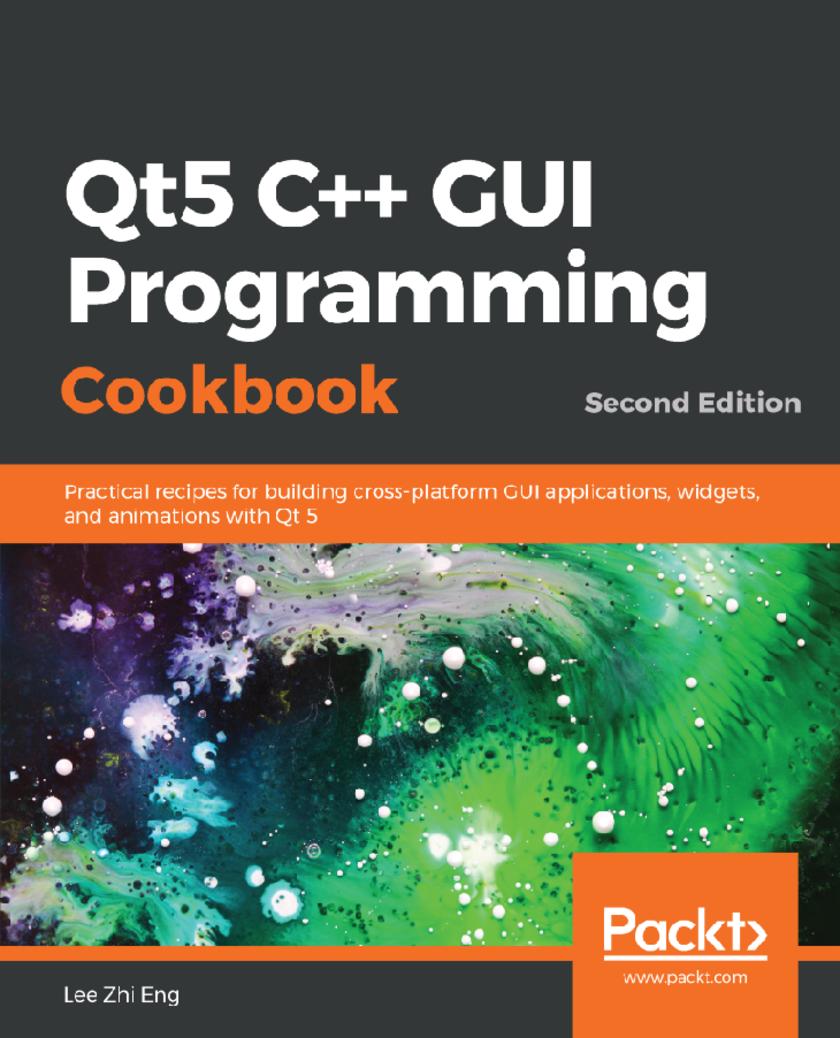
Qt5 C++ GUI Programming Cookbook
¥73.02
Use Qt 5 to design and build functional, appealing, and user-friendly graphical user interfaces (GUIs) for your applications. Key Features * Learn to use Qt 5 to design and customize the look and feel of your application * Improve the visual quality of an application by using graphics rendering and animation * Understand the balance of presentation and web content that will make an application appealing yet functional Book Description With the growing need to develop GUIs for multiple targets and multiple screens, improving the visual quality of your application becomes important so that it stands out from your competitors. With its cross-platform ability and the latest UI paradigms, Qt makes it possible to build intuitive, interactive, and user-friendly user interfaces for your applications. Qt5 C++ GUI Programming Cookbook, Second Edition teaches you how to develop functional and appealing user interfaces using the latest version of QT5 and C++.?This book will help you learn a variety of topics such as GUI customization and animation, graphics rendering, implementing Google Maps, and more. You will also be taken through advanced concepts like asynchronous programming, event handling using signals and slots, network programming, various aspects of optimizing your application. By the end of the book, you will be confident to design and customize GUI applications that meet your clients' expectations and have an understanding of best practice solutions for common problems. What you will learn * Animate GUI elements using Qt5's built-in animation system * Draw shapes and 2D images using Qt5's powerful rendering system * Implement an industry-standard OpenGL library in your project * Build a mobile app that supports touch events and exports it onto devices * Parse and extract data from an XML file and present it on your GUI * Interact with web content by calling JavaScript functions from C++ * Access MySQL and SQLite databases to retrieve data and display it on your GUI Who this book is for This intermediate-level book is designed for those who want to develop software using Qt 5. If you want to improve the visual quality and content presentation of your software application, this book is for you. Prior experience of C++ programming is required.
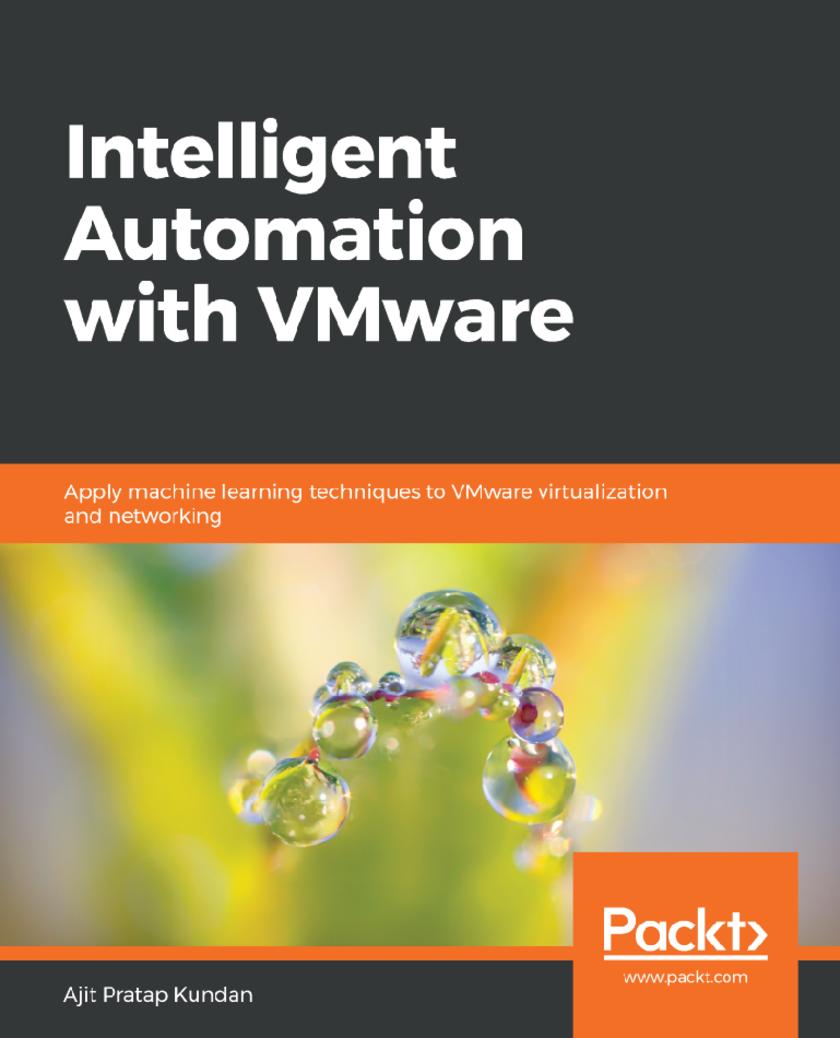
Intelligent Automation with VMware
¥73.02
Use self-driven data centers to reduce management complexity by deploying Infrastructure as Code to gain value from investments. Key Features * Add smart capabilities in VMware Workspace ONE to deliver customer insights and improve overall security * Optimize your HPC and big data infrastructure with the help of machine learning * Automate your VMware data center operations with machine learning Book Description This book presents an introductory perspective on how machine learning plays an important role in a VMware environment. It offers a basic understanding of how to leverage machine learning primitives, along with a deeper look into integration with the VMware tools used for automation today. This book begins by highlighting how VMware addresses business issues related to its workforce, customers, and partners with emerging technologies such as machine learning to create new, intelligence-driven, end user experiences. You will learn how to apply machine learning techniques incorporated in VMware solutions for data center operations. You will go through management toolsets with a focus on machine learning techniques. At the end of the book, you will learn how the new vSphere Scale-Out edition can be used to ensure that HPC, big data performance, and other requirements can be met (either through development or by fine-tuning guidelines) with mainstream products. What you will learn * Orchestrate on-demand deployments based on defined policies * Automate away common problems and make life easier by reducing errors * Deliver services to end users rather than to virtual machines * Reduce rework in a multi-layered scalable manner in any cloud * Explore the centralized life cycle management of hybrid clouds * Use common code so you can run it across any cloud Who this book is for This book is intended for those planning, designing, and implementing the virtualization/cloud components of the Software-Defined Data Center foundational infrastructure. It helps users to put intelligence in their automation tasks to get self driving data center. It is assumed that the reader has knowledge of, and some familiarity with, virtualization concepts and related topics, including storage, security, and networking.
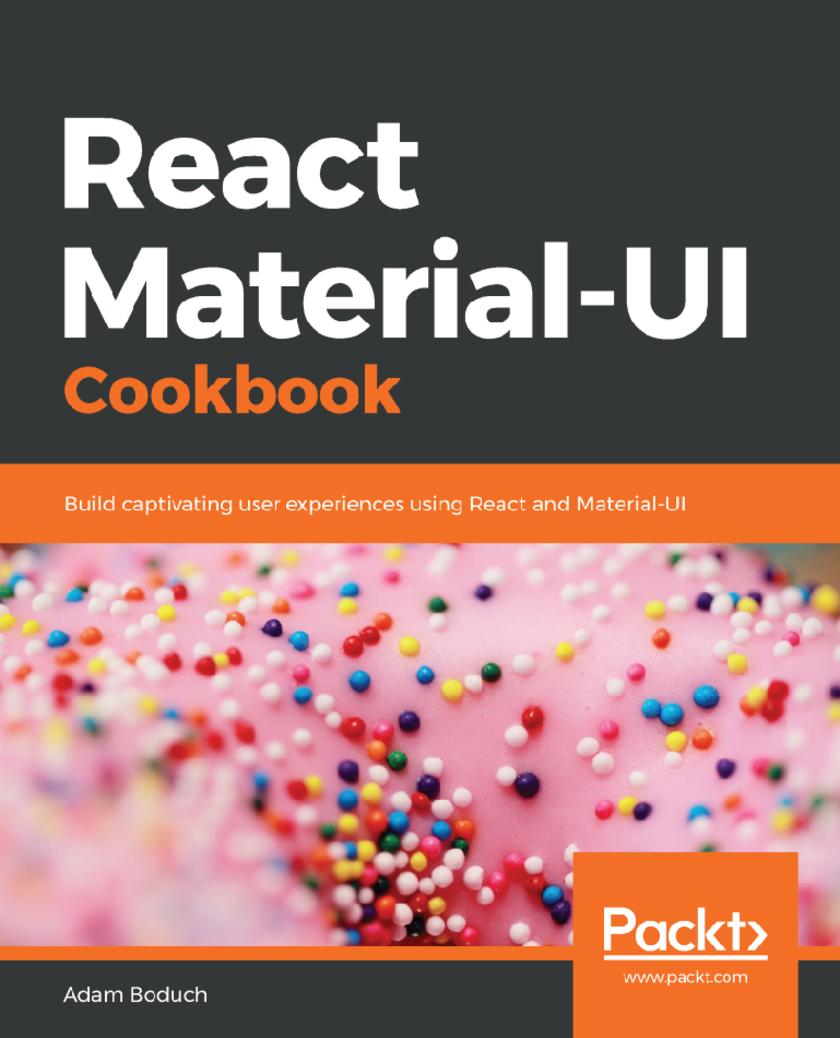
React Material-UI Cookbook
¥73.02
Build modern day application by implementing Material Design principles in React applications using Material-UI. Key Features * Grasp the needs React components for UI elements * Master the style and theme of the tools to go along with these components * Get to grips with all the React best practices to build a modern application Book Description Material-UI is a component library for rendering UI elements, using modern best practices from React and Material Design. This book will show you how you can create impressive and captivating modern day web apps by implementing Material Design considerations. The primary objective of this book is to help you use several Material-UI components to build larger UI functionality. We will also focus on React best practices in conjunction with Material-UI components – using state, context, and other new React 16.8 features properly. This book will start with layout and navigation and then dive into presenting the information with Material-UI components. It will then talk about the different components for user interactions. By the end of this book, you will know how to improve the look and feel of your applications using Material-UI components. What you will learn * Learn to build the overall structure and navigation for your Material-UI app * Learn to present simple and complex information in a variety of ways * Build interactive and intuitive controls * Design portable themes and styles for all of your Material-UI apps * Group content into sections using tabs and expansion panels * Learn how to design a general page layout with Material-UI grids * Use lists for complex data, and cards for detailed information Who this book is for They are JavaScript developers who have some basic knowledge of React and would want to implement Material Design principles in React applications using Material-UI. The reader wants to build a user interface using React components but doesn’t want to invent their own style or UX framework.
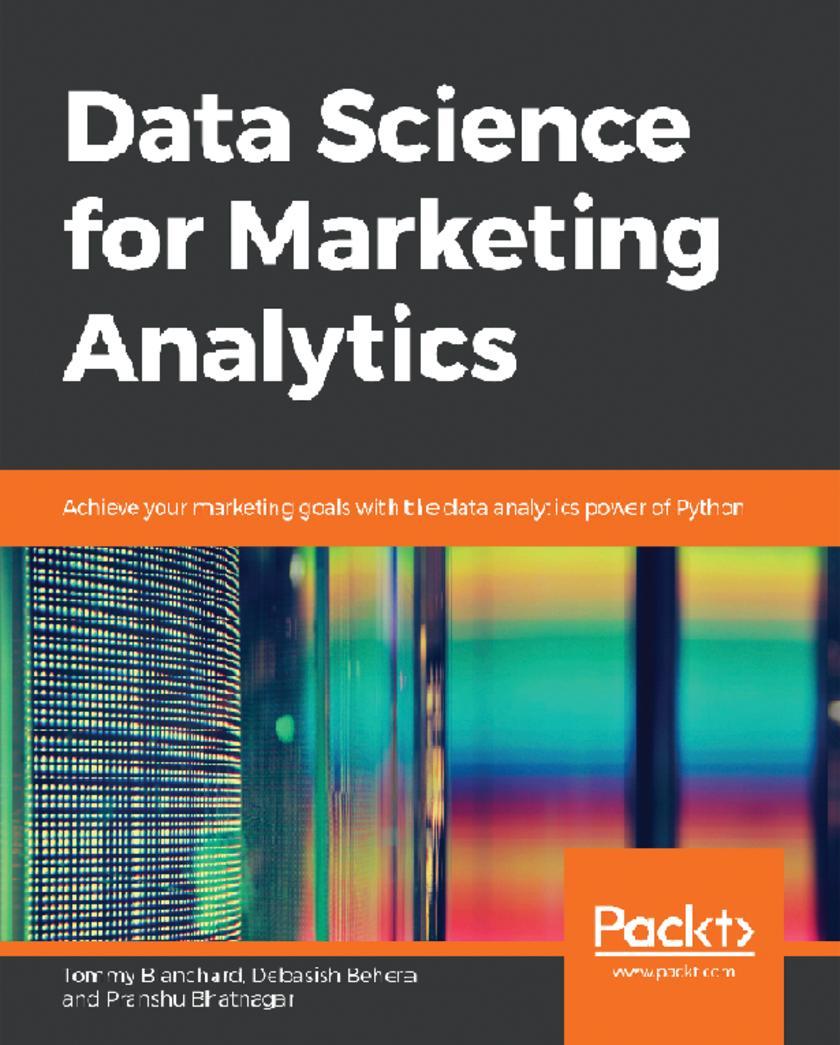
Data Science for Marketing Analytics
¥73.02
Explore new and more sophisticated tools that reduce your marketing analytics efforts and give you precise results Key Features * Study new techniques for marketing analytics * Explore uses of machine learning to power your marketing analyses * Work through each stage of data analytics with the help of multiple examples and exercises Book Description Data Science for Marketing Analytics covers every stage of data analytics, from working with a raw dataset to segmenting a population and modeling different parts of the population based on the segments. The book starts by teaching you how to use Python libraries, such as pandas and Matplotlib, to read data from Python, manipulate it, and create plots, using both categorical and continuous variables. Then, you'll learn how to segment a population into groups and use different clustering techniques to evaluate customer segmentation. As you make your way through the chapters, you'll explore ways to evaluate and select the best segmentation approach, and go on to create a linear regression model on customer value data to predict lifetime value. In the concluding chapters, you'll gain an understanding of regression techniques and tools for evaluating regression models, and explore ways to predict customer choice using classification algorithms. Finally, you'll apply these techniques to create a churn model for modeling customer product choices. By the end of this book, you will be able to build your own marketing reporting and interactive dashboard solutions. What you will learn * Analyze and visualize data in Python using pandas and Matplotlib * Study clustering techniques, such as hierarchical and k-means clustering * Create customer segments based on manipulated data * Predict customer lifetime value using linear regression * Use classification algorithms to understand customer choice * Optimize classification algorithms to extract maximal information Who this book is for Data Science for Marketing Analytics is designed for developers and marketing analysts looking to use new, more sophisticated tools in their marketing analytics efforts. It'll help if you have prior experience of coding in Python and knowledge of high school level mathematics. Some experience with databases, Excel, statistics, or Tableau is useful but not necessary.
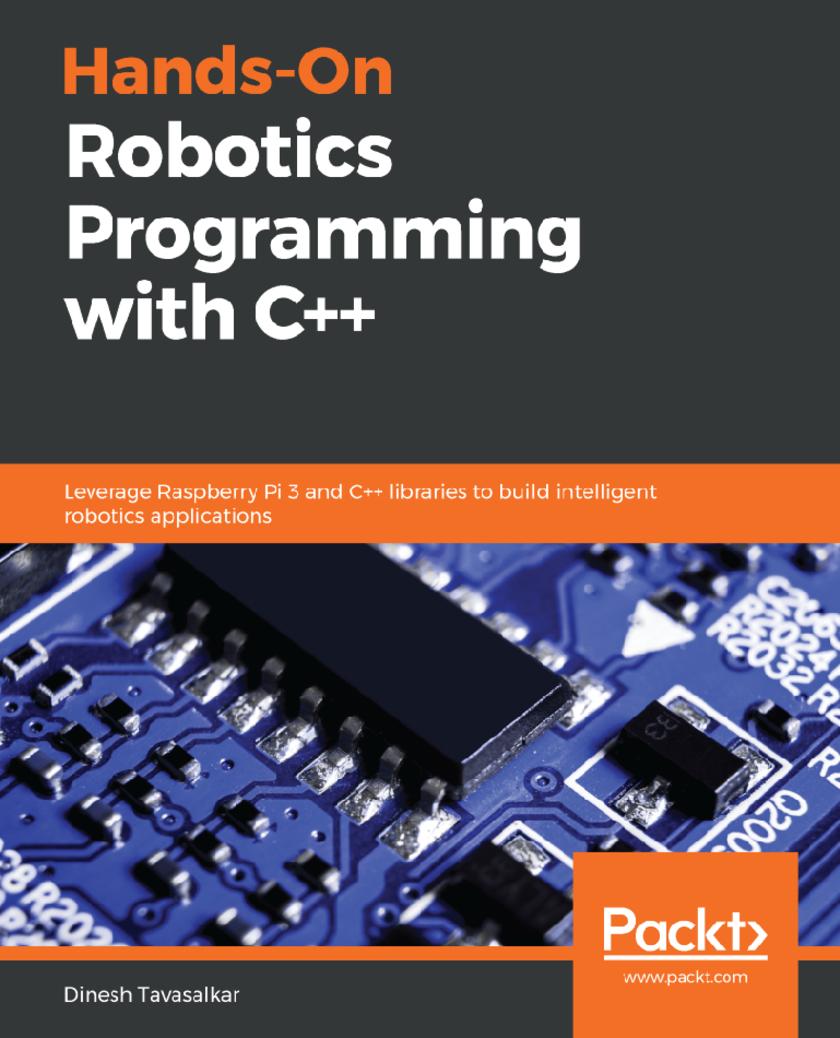
Hands-On Robotics Programming with C++
¥73.02
Enhance your programming skills to build exciting robotic projects Key Features * Build an intelligent robot that can detect and avoid obstacles and respond to voice commands * Detect and track objects and faces using OpenCV * Control your robot with a GUI button designed using Qt5 Book Description C++ is one of the most popular legacy programming languages for robotics, and a combination of C++ and robotics hardware is used in many leading industries. This book will bridge the gap between Raspberry Pi and C/C++ programming and enable you to develop applications for Raspberry Pi. To follow along with the projects covered in the book, you can implement C programs in Raspberry Pi with the wiringPi library. With this book, you’ll develop a fully functional car robot and write programs to move it in different directions. You’ll then create an obstacle - avoiding robot using an ultrasonic sensor. Furthermore, you’ll find out how to control the robot wirelessly using your PC/Mac. This book will also help you work with object detection and tracking using OpenCV, and guide you through exploring face detection techniques. Finally, you will create an Android app and control the robot wirelessly with an Android smartphone. By the end of this book, you will have gained experience in developing a robot using Raspberry Pi and C/C++ programming. What you will learn * Install software in Raspberry Pi compatible with C++ programming * Program the Raspberry Pi in C++ to run a motor * Control RPi-powered robot wirelessly with your laptop or PC * Program an RPi camera using OpenCV Control a Raspberry Pi robot with voice commands * Implement face and object detection with Raspberry Pi Who this book is for This book is for developers, programmers, and robotics enthusiasts interested in leveraging C++ to build exciting robotics applications. Prior knowledge of C++ is necessary to understand the projects covered in this book.
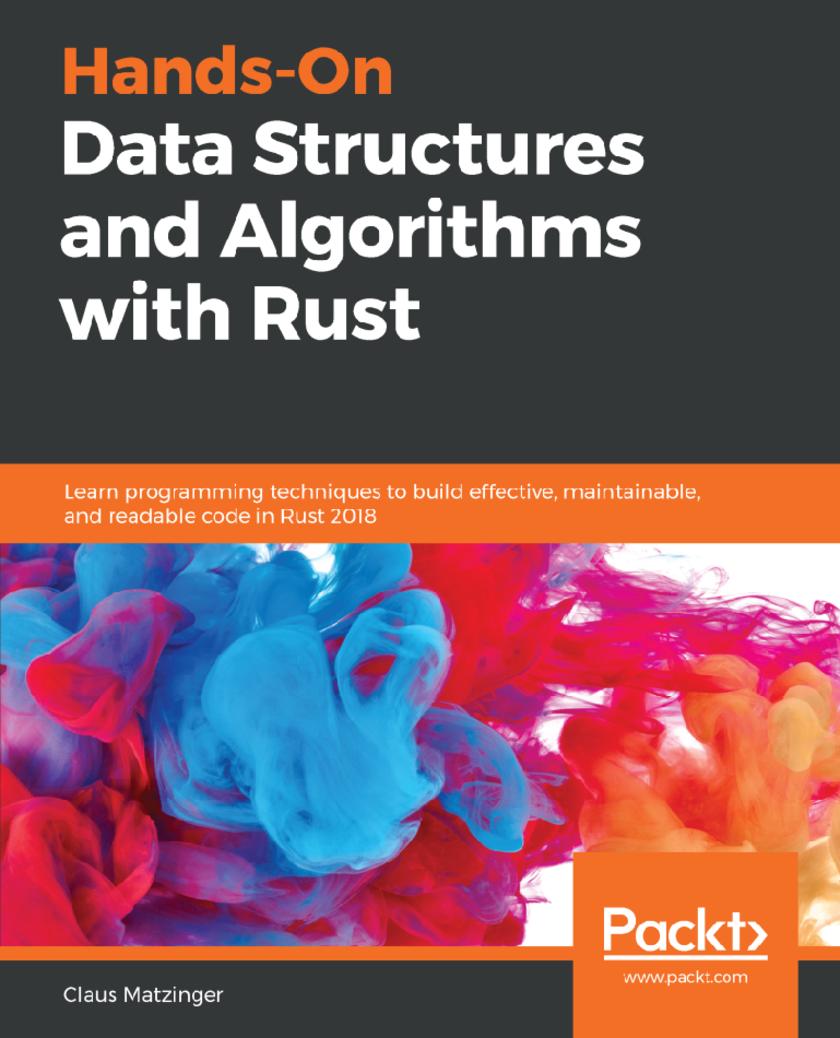
Hands-On Data Structures and Algorithms with Rust
¥73.02
Design and implement professional level programs by exploring modern data structures and algorithms in Rust. Key Features * Use data structures such as arrays, stacks, trees, lists and graphs with real-world examples * Learn the functional and reactive implementations of the traditional data structures * Explore illustrations to present data structures and algorithms, as well as their analysis, in a clear, visual manner. Book Description Rust has come a long way and is now utilized in several contexts. Its key strengths are its software infrastructure and resource-constrained applications, including desktop applications, servers, and performance-critical applications, not forgetting its importance in systems' programming. This book will be your guide as it takes you through implementing classic data structures and algorithms in Rust, helping you to get up and running as a confident Rust programmer. The book begins with an introduction to Rust data structures and algorithms, while also covering essential language constructs. You will learn how to store data using linked lists, arrays, stacks, and queues. You will also learn how to implement sorting and searching algorithms. You will learn how to attain high performance by implementing algorithms to string data types and implement hash structures in algorithm design. The book will examine algorithm analysis, including Brute Force algorithms, Greedy algorithms, Divide and Conquer algorithms, Dynamic Programming, and Backtracking. By the end of the book, you will have learned how to build components that are easy to understand, debug, and use in different applications. What you will learn * Design and implement complex data structures in Rust * Analyze, implement, and improve searching and sorting algorithms in Rust * Create and use well-tested and reusable components with Rust * Understand the basics of multithreaded programming and advanced algorithm design * Become familiar with application profiling based on benchmarking and testing * Explore the borrowing complexity of implementing algorithms Who this book is for This book is for developers seeking to use Rust solutions in a practical/professional setting; who wants to learn essential Data Structures and Algorithms in Rust. It is for developers with basic Rust language knowledge, some experience in other programming languages is required.
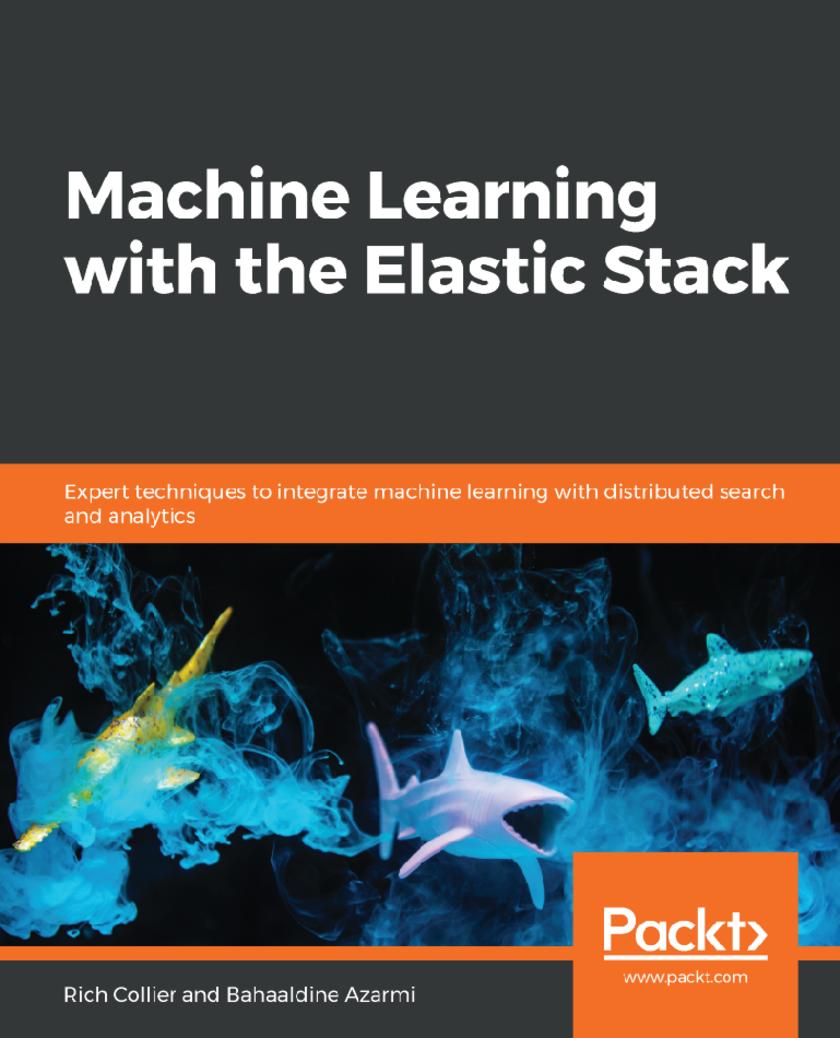
Machine Learning with the Elastic Stack
¥73.02
Leverage Elastic Stack’s machine learning features to gain valuable insight from your data Key Features * Combine machine learning with the analytic capabilities of Elastic Stack * Analyze large volumes of search data and gain actionable insight from them * Use external analytical tools with your Elastic Stack to improve its performance Book Description Machine Learning with the Elastic Stack is a comprehensive overview of the embedded commercial features of anomaly detection and forecasting. The book starts with installing and setting up Elastic Stack. You will perform time series analysis on varied kinds of data, such as log files, network flows, application metrics, and financial data. As you progress through the chapters, you will deploy machine learning within the Elastic Stack for logging, security, and metrics. In the concluding chapters, you will see how machine learning jobs can be automatically distributed and managed across the Elasticsearch cluster and made resilient to failure. By the end of this book, you will understand the performance aspects of incorporating machine learning within the Elastic ecosystem and create anomaly detection jobs and view results from Kibana directly. What you will learn * Install the Elastic Stack to use machine learning features * Understand how Elastic machine learning is used to detect a variety of anomaly types * Apply effective anomaly detection to IT operations and security analytics * Leverage the output of Elastic machine learning in custom views, dashboards, and proactive alerting * Combine your created jobs to correlate anomalies of different layers of infrastructure * Learn various tips and tricks to get the most out of Elastic machine learning Who this book is for If you are a data professional eager to gain insight on Elasticsearch data without having to rely on a machine learning specialist or custom development, Machine Learning with the Elastic Stack is for you. Those looking to integrate machine learning within their search and analytics applications will also find this book very useful. Prior experience with the Elastic Stack is needed to get the most out of this book.
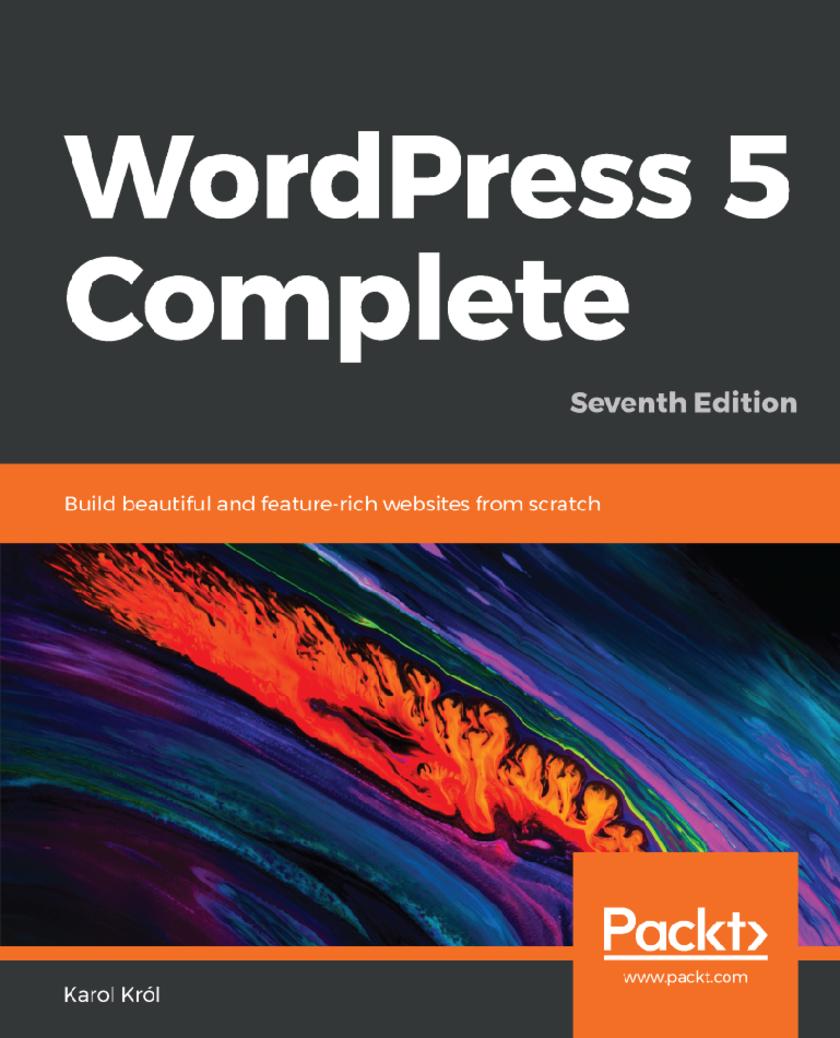
WordPress 5 Complete
¥73.02
An in-depth and comprehensive take on WordPress, covering everything about the platform such as WordPress posts, pages, themes, plugins, and more. Key Features * Get up to date with the latest WordPress 5.0 (Bebo) and all its new features * Beginner-friendly layout and advice you can apply from day one with loads of screenshots and examples * Enrich your development experience with the new block-based editor Gutenberg Book Description Back in the day, when you wanted to launch a new website, you either had to learn web programming yourself or hire a professional who would take care of the whole process for you. Nowadays, with WordPress, anyone can build an optimized site with the least amount of effort possible and then make it available to the world in no time. Here, in the seventh edition of the book, we are going to show you how to build great looking and functional websites using WordPress. The new version of WordPress – 5.0 – comes with a few important changes, and we tell you all about how to use them effectively. From crafting content pages using the block editor, and customizing the design of your site, through to making sure it's secure, we go through it all. The book starts by introducing WordPress and teaching you how to set it up. You are then shown how to create a blog site, start writing content, and even use plugins and themes to customize the design of the site and add some unique elements to set it apart. If you want to get more in-depth, we also show you how to get started creating your own themes and plugins. Finally, we teach you how to use WordPress for building non-blog websites. By the end of the book, you will be sufficiently skilled to design high-quality websites and will be fully familiar with the ins and outs of WordPress. What you will learn * Learn to adapt your plugin with the Gutenberg editor * Create content that is optimized for publication on the web * Craft great looking pages and posts with the use of block editor * Structure your web pages in an accessible and clear way * Install and work with plugins and themes * Customize the design of your website * Upload multimedia content, such as images, audio, and video easily and effectively * Develop your own WordPress plugins and themes * Use WordPress to build websites that serve purposes other than blogs Who this book is for The ideal target audience for this book would be PHP developers who have some basic knowledge of working with WordPress and who want to get a comprehensive practical understanding of working with WordPress and create production-ready websites with it.
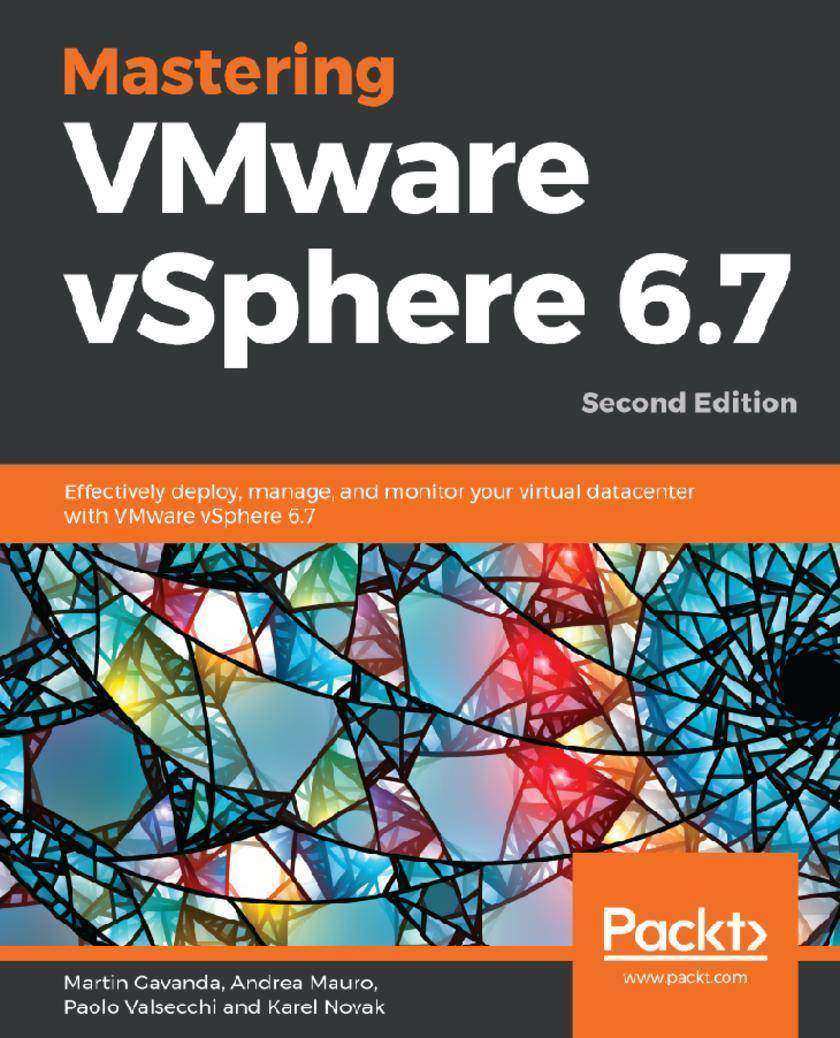
Mastering VMware vSphere 6.7
¥73.02
Unleash the benefits of VMware vSphere 6.7 to provide a powerful, flexible and secure digital infrastructure Key Features * Deep dive into areas like management, security, scalability, availability and more with vSphere 6.7 * Design, deploy and manage VMware vSphere virtual datacenters * Implement monitoring and security of VMware workloads with ease Book Description vSphere 6.7 is the latest release of VMware’s industry-leading, virtual cloud platform. It allows organisations to move to hybrid cloud computing by enabling them to run, manage, connect and secure applications in a common operating environment. This up-to-date, 2nd edition provides complete coverage of vSphere 6.7. Complete with step-by-step explanations of essential concepts, practical examples and self-assessment questions, you will begin with an overview of the products, solutions and features of the vSphere 6.7 suite. You’ll learn how to design and plan a virtual infrastructure and look at the workflow and installation of components. You'll gain insight into best practice configuration, management and security. By the end the book you'll be able to build your own VMware vSphere lab that can run even the most demanding of workloads. What you will learn * Explore the immense functionality of vSphere 6.7 * Design, manage and administer a virtualization environment * Get tips for the VCP6-DCV and VCIX6-DCV exams * Understand how to implement different migration techniques across different environments * Explore vSphere 6.7s powerful capabilities for patching, upgrading and managing the configuration of virtual environments. * Understand core vSphere components * Master resource management, disaster recovery, troubleshooting, monitoring and security Who this book is for This book is for Administrators, Infrastructure Engineers, Architects, and Consultants with basic knowledge of VMware vSphere.
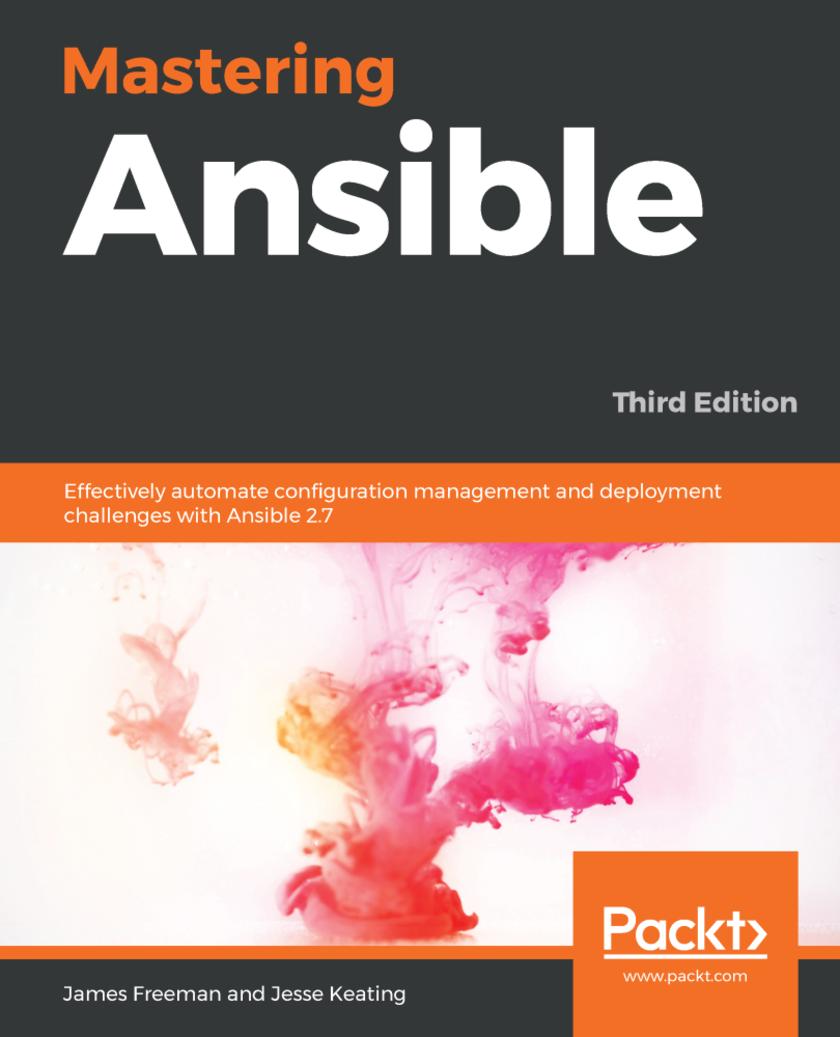
Mastering Ansible
¥73.02
Design, develop, and solve real-world automation and orchestration problems by unlocking the automation capabilities of Ansible. Key Features * Tackle complex automation challenges with the newly added features in Ansible 2.7 Book Description Automation is essential for success in the modern world of DevOps. Ansible provides a simple, yet powerful, automation engine for tackling complex automation challenges. This book will take you on a journey that will help you exploit the latest version's advanced features to help you increase efficiency and accomplish complex orchestrations. This book will help you understand how Ansible 2.7 works at a fundamental level and will also teach you to leverage its advanced capabilities. Throughout this book, you will learn how to encrypt Ansible content at rest and decrypt data at runtime. Next, this book will act as an ideal resource to help you master the advanced features and capabilities required to tackle complex automation challenges. Later, it will walk you through workflows, use cases, orchestrations, troubleshooting, and Ansible extensions. Lastly, you will examine and debug Ansible operations, helping you to understand and resolve issues. By the end of the book, you will be able to unlock the true power of the Ansible automation engine and tackle complex, real- world actions with ease. What you will learn * Gain an in-depth understanding of how Ansible works under the hood * Fully automate Ansible playbook executions with encrypted data * Access and manipulate variable data within playbooks * Use blocks to perform failure recovery or cleanup * Explore the Playbook debugger and the Ansible Console * Troubleshoot unexpected behavior effectively * Work with cloud infrastructure providers and container systems * Develop custom modules, plugins, and dynamic inventory sources Who this book is for This book is for Ansible developers and operators who have an understanding of its core elements and applications but are now looking to enhance their skills in applying automation using Ansible.
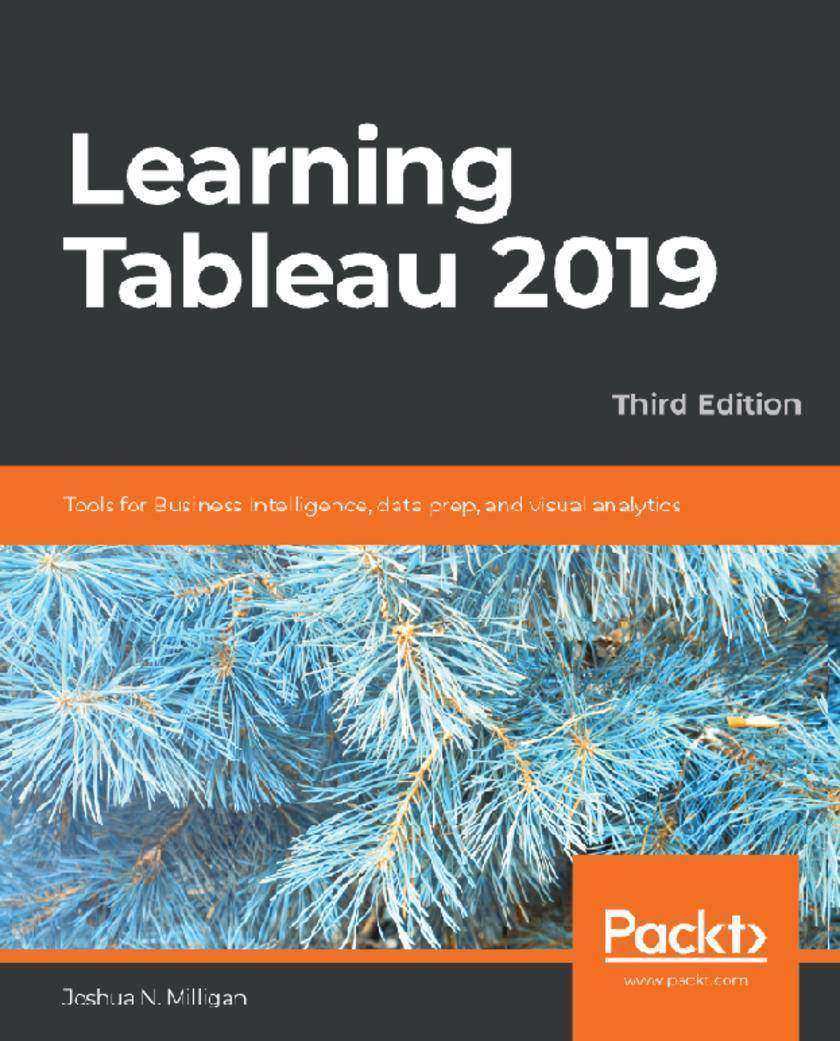
Learning Tableau 2019
¥73.02
Create powerful data visualizations and unlock intelligent business insights with Tableau Key Features * Explore all the latest Tableau 2019 features and redefine business analytics for your organization * Create impressive data visualizations and interactive dashboards to get insights from your data * Learn effective data storytelling to transform how your business leverages data and makes decisions Book Description Tableau is the gold standard of business intelligence and visual analytics tools in every industry. It enables rapid data visualization and interpretation with charts, graphs, dashboards, and much more. Updated with the latest features of Tableau, this book takes you from the foundations of the Tableau 2019 paradigm through to advanced topics. This third edition of the bestselling guide by Tableau Zen Master, Milligan, will help you come to grips with updated features, such as set actions and transparent views. Beginning with installation, you'll create your first visualizations with Tableau and then explore practical examples and advanced techniques. You'll create bar charts, tree maps, scatterplots, time series, and a variety of other visualizations. Next, you'll discover techniques to overcome challenges presented by data structure and quality and engage in effective data storytelling and decision making with business critical information. Finally, you'll be introduced to Tableau Prep, and learn how to use it to integrate and shape data for analysis. By the end of this book, you will be equipped to leverage the powerful features of Tableau 2019 for decision making. What you will learn * Develop stunning visualizations that explain complexity with clarity * Explore the exciting new features of Tableau Desktop and Tableau Prep * Connect to various data sources to bring all your data together * Uncover techniques to prep and structure your data for easy analysis * Create and use calculations to solve problems and enrich analytics * Master advanced topics such as sets, LOD calcs, and much more * Enable smart decisions with clustering, distribution, and forecasting * Share your data stories to build a culture of trust and action Who this book is for This Tableau book is for anyone who wants to understand data. If you’re new to Tableau, don’t worry. This book builds on the foundations to help you understand how Tableau really works and then builds on that knowledge with practical examples before moving on to advanced techniques. Working experience with databases will be useful but is not necessary to get the most out of this book.

Mastering Office 365 Administration
¥73.02
Leverage Office 365 to increase your organization's efficiency About This Book ? Perform common to advanced-level management and administrative tasks for your organization with Office 365 ? Become an Office 365 generalist who can work with the entire stack—not just specific products ? An advanced-level guide that will teach you to implement enterprise-level services into your organization, no matter the size of the business Who This Book Is For This book targets architects, sys admins, engineers, and administrators who are working with Office 365 and are responsible for configuring, implementing, and managing Office 365 in their organization. A prior knowledge of Office 365 and Exchange servers is mandatory. What You Will Learn ? Get an understanding of the vast Office 365 feature set ? Learn how workloads and applications interact and integrate with each other ? Connect PowerShell to various Office 365 services and perform tasks ? Learn to manage Skype for Business Online ? Get support and monitor Office 365 service health ? Manage and administer identities and groups efficiently In Detail In today's world, every organization aims to migrate to the cloud to become more efficient by making full use of the latest technologies. Office 365 is your one-stop solution to making your organization reliable, scalable, and fast. The book will start with an overview of Office 365 components, and help you learn how to use the administration portal, and perform basic administration. Then this book covers common management tasks such as managing users, admin roles, groups, securing Office 365, and enforcing compliance. In the next set of chapters, you will learn topics such as managing Skype for Business Online, Yammer, OneDrive for Business, and Microsoft Teams. In the final section of the book, you will learn how to perform reporting and monitor Office 365 service health. By the end of this book, you will be able to implement enterprise-level services with Office 365 based on your organization's needs. Style and approach A practical guide that offers a simple way to easily understand and access common administration tasks, without getting lost in the plethora of online resources, support pages, blog posts, and videos.
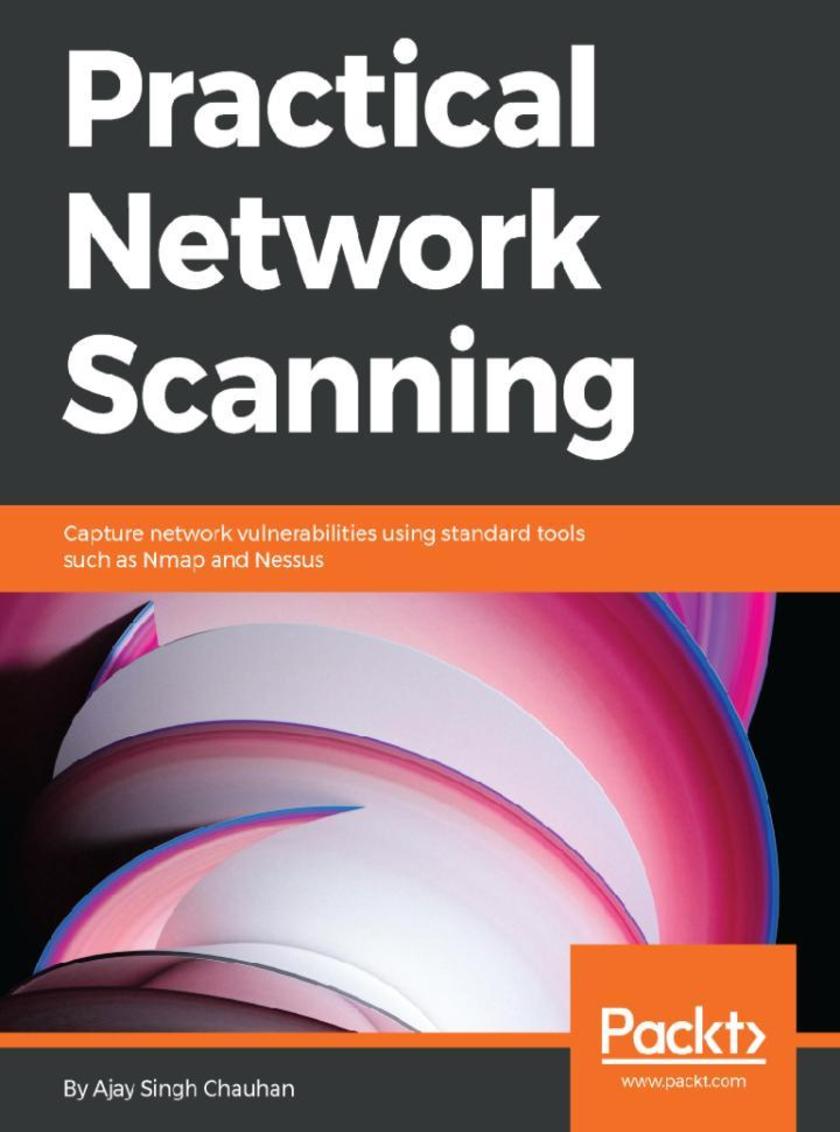
Practical Network Scanning
¥73.02
Get more from your network by securing its infrastructure and increasing its effectiveness About This Book ? Learn to choose the best network scanning toolset for your system ? Implement different concepts of network scanning such as port scanning and OS detection ? Adapt a practical approach to securing your network Who This Book Is For If you are a security professional who is responsible for securing an organization's infrastructure, then this book is for you. What You Will Learn ? Achieve an effective security posture to design security architectures ? Learn vital security aspects before moving to the Cloud ? Launch secure applications with Web Application Security and SQL Injection ? Explore the basics of threat detection/response/ mitigation with important use cases ? Learn all about integration principles for PKI and tips to secure it ? Design a WAN infrastructure and ensure security over a public WAN In Detail Network scanning is the process of assessing a network to identify an active host network; same methods can be used by an attacker or network administrator for security assessment. This procedure plays a vital role in risk assessment programs or while preparing a security plan for your organization. Practical Network Scanning starts with the concept of network scanning and how organizations can benefit from it. Then, going forward, we delve into the different scanning steps, such as service detection, firewall detection, TCP/IP port detection, and OS detection. We also implement these concepts using a few of the most prominent tools on the market, such as Nessus and Nmap. In the concluding chapters, we prepare a complete vulnerability assessment plan for your organization. By the end of this book, you will have hands-on experience in performing network scanning using different tools and in choosing the best tools for your system. Style and approach A practical guide that offers a simple way to easily understand network security concepts and apply them to strengthen your network.

Mastering Wireshark 2
¥73.02
Use Wireshark 2 to overcome real-world network problems About This Book ? Delve into the core functionalities of the latest version of Wireshark ? Master network security skills with Wireshark 2 ? Efficiently find the root cause of network-related issues Who This Book Is For If you are a security professional or a network enthusiast and are interested in understanding the internal working of networks, and if you have some prior knowledge of using Wireshark, then this book is for you. What You Will Learn ? Understand what network and protocol analysis is and how it can help you ? Use Wireshark to capture packets in your network ? Filter captured traffic to only show what you need ? Explore useful statistic displays to make it easier to diagnose issues ? Customize Wireshark to your own specifications ? Analyze common network and network application protocols In Detail Wireshark, a combination of a Linux distro (Kali) and an open source security framework (Metasploit), is a popular and powerful tool. Wireshark is mainly used to analyze the bits and bytes that flow through a network. It efficiently deals with the second to the seventh layer of network protocols, and the analysis made is presented in a form that can be easily read by people. Mastering Wireshark 2 helps you gain expertise in securing your network. We start with installing and setting up Wireshark2.0, and then explore its interface in order to understand all of its functionalities. As you progress through the chapters, you will discover different ways to create, use, capture, and display filters. By halfway through the book, you will have mastered Wireshark features, analyzed different layers of the network protocol, and searched for anomalies. You’ll learn about plugins and APIs in depth. Finally, the book focuses on pocket analysis for security tasks, command-line utilities, and tools that manage trace files. By the end of the book, you'll have learned how to use Wireshark for network security analysis and configured it for troubleshooting purposes. Style and approach This step-by-step guide on Wireshark 2 starts with capturing and filtering traffic and follows with analysis and statistics, as well as all the new features of Wireshark 2.
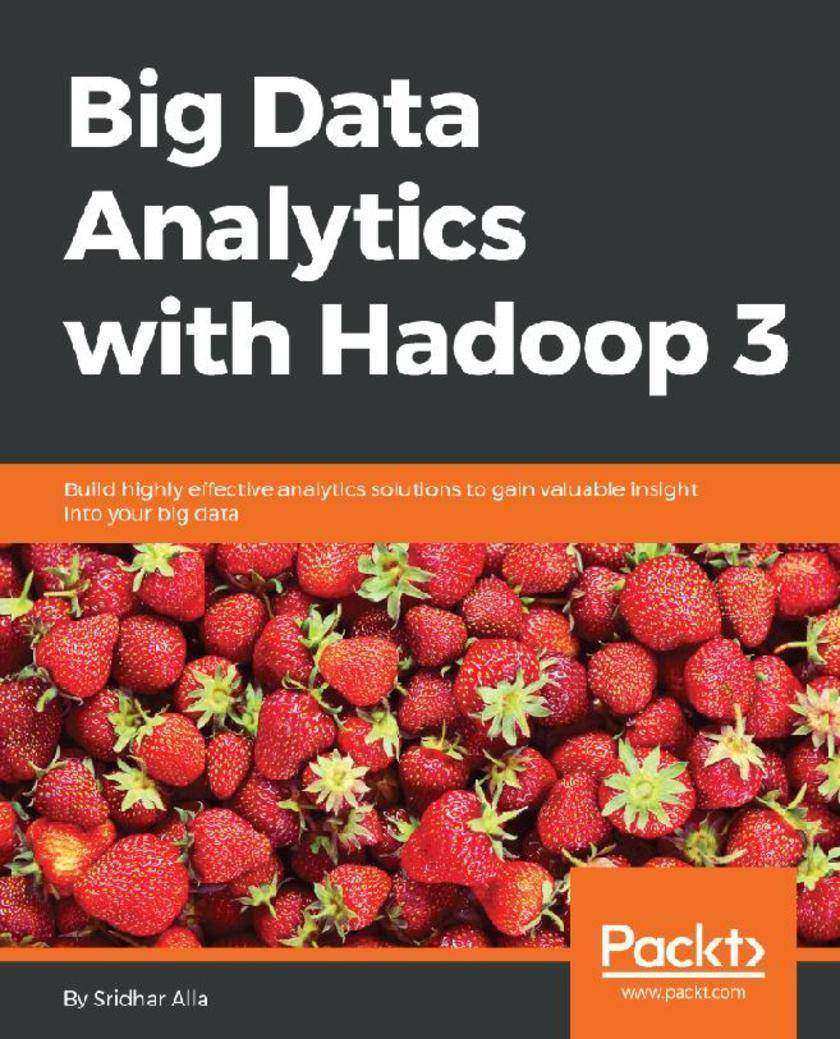
Big Data Analytics with Hadoop 3
¥73.02
Explore big data concepts, platforms, analytics, and their applications using the power of Hadoop 3 About This Book ? Learn Hadoop 3 to build effective big data analytics solutions on-premise and on cloud ? Integrate Hadoop with other big data tools such as R, Python, Apache Spark, and Apache Flink ? Exploit big data using Hadoop 3 with real-world examples Who This Book Is For Big Data Analytics with Hadoop 3 is for you if you are looking to build high-performance analytics solutions for your enterprise or business using Hadoop 3’s powerful features, or you’re new to big data analytics. A basic understanding of the Java programming language is required. What You Will Learn ? Explore the new features of Hadoop 3 along with HDFS, YARN, and MapReduce ? Get well-versed with the analytical capabilities of Hadoop ecosystem using practical examples ? Integrate Hadoop with R and Python for more efficient big data processing ? Learn to use Hadoop with Apache Spark and Apache Flink for real-time data analytics ? Set up a Hadoop cluster on AWS cloud ? Perform big data analytics on AWS using Elastic Map Reduce In Detail Apache Hadoop is the most popular platform for big data processing, and can be combined with a host of other big data tools to build powerful analytics solutions. Big Data Analytics with Hadoop 3 shows you how to do just that, by providing insights into the software as well as its benefits with the help of practical examples. Once you have taken a tour of Hadoop 3’s latest features, you will get an overview of HDFS, MapReduce, and YARN, and how they enable faster, more efficient big data processing. You will then move on to learning how to integrate Hadoop with the open source tools, such as Python and R, to analyze and visualize data and perform statistical computing on big data. As you get acquainted with all this, you will explore how to use Hadoop 3 with Apache Spark and Apache Flink for real-time data analytics and stream processing. In addition to this, you will understand how to use Hadoop to build analytics solutions on the cloud and an end-to-end pipeline to perform big data analysis using practical use cases. By the end of this book, you will be well-versed with the analytical capabilities of the Hadoop ecosystem. You will be able to build powerful solutions to perform big data analytics and get insight effortlessly. Style and approach Filled with practical examples and use cases, this book will not only help you get up and running with Hadoop, but will also take you farther down the road to deal with Big Data Analytics
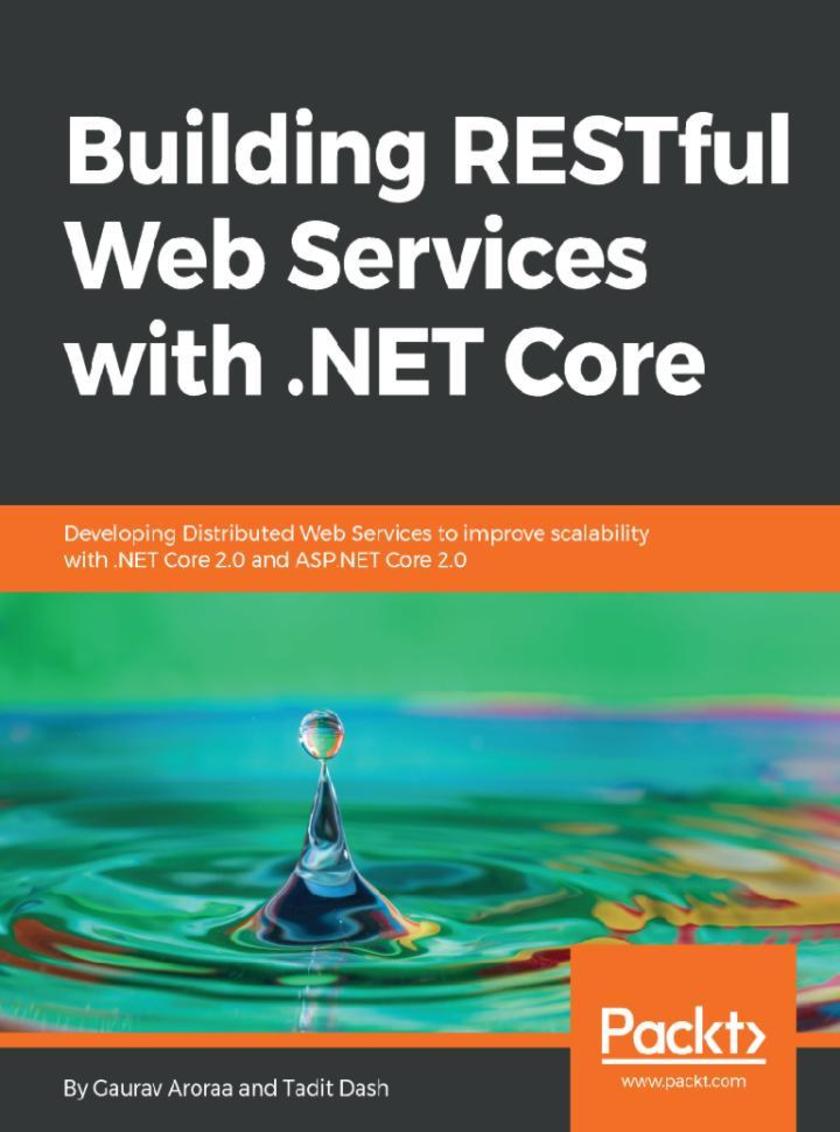
Building RESTful Web Services with .NET Core
¥73.02
Building Complete E-commerce/Shopping Cart Application About This Book ? Follow best practices and explore techniques such as clustering and caching to achieve a reactive, scalable web service ? Leverage the .NET Framework to quickly implement RESTful endpoints. ? Learn to implement a client library for a RESTful web service using ASP.NET Core. Who This Book Is For This book is intended for those who want to learn to build RESTful web services with the latest .NET Core Framework. To make best use of the code samples included in the book, you should have a basic knowledge of C# and .NET Core. What You Will Learn ? Add basic authentication to your RESTful API ? Create a Carts Controller and Orders Controller to manage and process Orders ? Intercept HTTP requests and responses by building your own middleware ? Test service calls using Postman and Advanced REST Client ? Secure your data/application using annotations In Detail REST is an architectural style that tackles the challenges of building scalable web services. In today's connected world, APIs have taken a central role on the web. APIs provide the fabric through which systems interact, and REST has become synonymous with APIs. The depth, breadth, and ease of use of ASP.NET Core makes it a breeze for developers to work with for building robust web APIs. This book takes you through the design of RESTful web services and leverages the ASP.NET Core framework to implement these services. This book begins by introducing you to the basics of the philosophy behind REST. You'll go through the steps of designing and implementing an enterprise-grade RESTful web service. This book takes a practical approach, that you can apply to your own circumstances. This book brings forth the power of the latest .NET Core release, working with MVC. Later, you will learn about the use of the framework to explore approaches to tackle resilience, security, and scalability concerns. You will explore the steps to improve the performance of your applications. You'll also learn techniques to deal with security in web APIs and discover how to implement unit and integration test strategies. By the end of the book, you will have a complete understanding of Building a client for RESTful web services, along with some scaling techniques. Style and approach This book is a step-by-step, hands-on guide to designing and building RESTful web services.
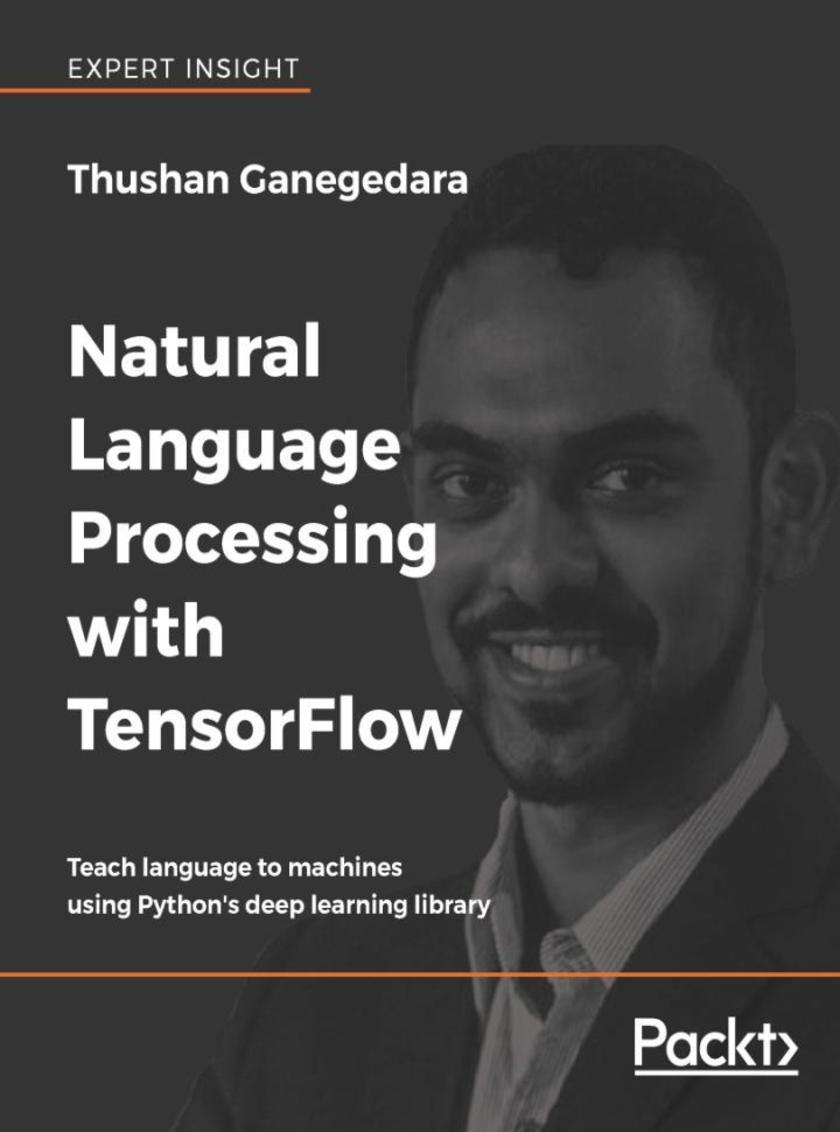
Natural Language Processing with TensorFlow
¥73.02
Write modern natural language processing applications using deep learning algorithms and TensorFlow About This Book ? Focuses on more efficient natural language processing using TensorFlow ? Covers NLP as a field in its own right to improve understanding for choosing TensorFlow tools and other deep learning approaches ? Provides choices for how to process and evaluate large unstructured text datasets ? Learn to apply the TensorFlow toolbox to specific tasks in the most interesting field in artificial intelligence Who This Book Is For This book is for Python developers with a strong interest in deep learning, who want to learn how to leverage TensorFlow to simplify NLP tasks. Fundamental Python skills are assumed, as well as some knowledge of machine learning and undergraduate-level calculus and linear algebra. No previous natural language processing experience required, although some background in NLP or computational linguistics will be helpful. What You Will Learn ? Core concepts of NLP and various approaches to natural language processing ? How to solve NLP tasks by applying TensorFlow functions to create neural networks ? Strategies to process large amounts of data into word representations that can be used by deep learning applications ? Techniques for performing sentence classification and language generation using CNNs and RNNs ? About employing state-of-the art advanced RNNs, like long short-term memory, to solve complex text generation tasks ? How to write automatic translation programs and implement an actual neural machine translator from scratch ? The trends and innovations that are paving the future in NLP In Detail Natural language processing (NLP) supplies the majority of data available to deep learning applications, while TensorFlow is the most important deep learning framework currently available. Natural Language Processing with TensorFlow brings TensorFlow and NLP together to give you invaluable tools to work with the immense volume of unstructured data in today’s data streams, and apply these tools to specific NLP tasks. Thushan Ganegedara starts by giving you a grounding in NLP and TensorFlow basics. You'll then learn how to use Word2vec, including advanced extensions, to create word embeddings that turn sequences of words into vectors accessible to deep learning algorithms. Chapters on classical deep learning algorithms, like convolutional neural networks (CNN) and recurrent neural networks (RNN), demonstrate important NLP tasks as sentence classification and language generation. You will learn how to apply high-performance RNN models, like long short-term memory (LSTM) cells, to NLP tasks. You will also explore neural machine translation and implement a neural machine translator. After reading this book, you will gain an understanding of NLP and you'll have the skills to apply TensorFlow in deep learning NLP applications, and how to perform specific NLP tasks. Style and approach The book provides an emphasis on both the theory and practice of natural language processing. It introduces the reader to existing TensorFlow functions and explains how to apply them while writing NLP algorithms. The popular Word2vec method is used to teach the essential process of learning word representations. The book focuses on how to apply classical deep learning to NLP, as well as exploring cutting edge and emerging approaches. Specific examples are used to make the concepts and techniques concrete.

Becoming the Hacker
¥73.02
Web penetration testing by becoming an ethical hacker. Protect the web by learning the tools, and the tricks of the web application attacker. Key Features * Builds on books and courses on penetration testing for beginners * Covers both attack and defense perspectives * Examines which tool to deploy to suit different applications and situations Book Description Becoming the Hacker will teach you how to approach web penetration testing with an attacker's mindset. While testing web applications for performance is common, the ever-changing threat landscape makes security testing much more difficult for the defender. There are many web application tools that claim to provide a complete survey and defense against potential threats, but they must be analyzed in line with the security needs of each web application or service. We must understand how an attacker approaches a web application and the implications of breaching its defenses. Through the first part of the book, Adrian Pruteanu walks you through commonly encountered vulnerabilities and how to take advantage of them to achieve your goal. The latter part of the book shifts gears and puts the newly learned techniques into practice, going over scenarios where the target may be a popular content management system or a containerized application and its network. Becoming the Hacker is a clear guide to web application security from an attacker's point of view, from which both sides can benefit. What you will learn * Study the mindset of an attacker * Adopt defensive strategies * Classify and plan for standard web application security threats * Prepare to combat standard system security problems * Defend WordPress and mobile applications * Use security tools and plan for defense against remote execution Who this book is for The reader should have basic security experience, for example, through running a network or encountering security issues during application development. Formal education in security is useful, but not required. This title is suitable for people with at least two years of experience in development, network management, or DevOps, or with an established interest in security.
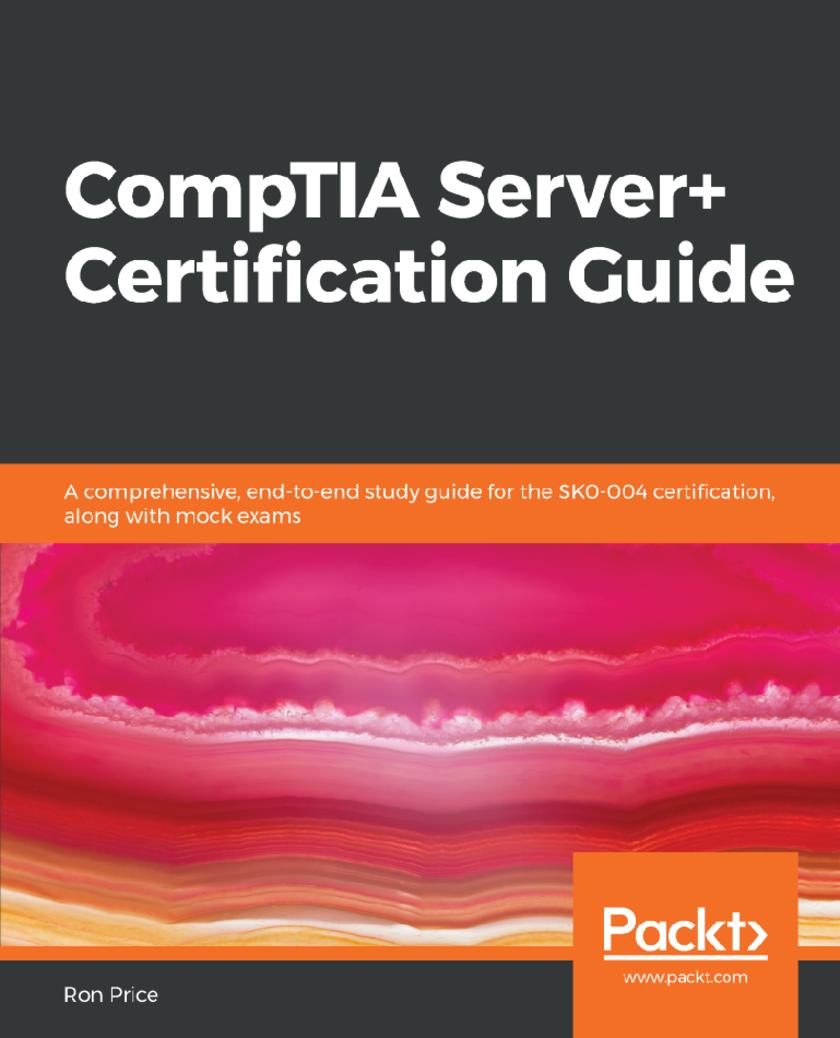
CompTIA Server+ Certification Guide
¥73.02
Master the concepts and techniques that will enable you to succeed on the SK0-004 exam the first time with the help of this study guide Key Features * Explore virtualisation, IPv4 & IPv6 networking, administration and more * Enhancing limited knowledge of server configuration and function * A study guide that covers the objectives for the certification examination Book Description CompTIA Server+ Certification is one of the top 5 IT certifications that is vendor neutral.System administrators opt for CompTIA server+ Certification to gain advanced knowledge of concepts including troubleshooting and networking. This book will initially start with the configuration of a basic network server and the configuration for each of its myriad roles. The next set of chapters will provide an overview of the responsibilities and tasks performed by a system administrator to manage and maintain a network server. Moving ahead, you will learn the basic security technologies, methods, and procedures that can be applied to a server and its network. Next, you will cover the troubleshooting procedures and methods in general, and specifically for hardware, software, networks, storage devices, and security applications. Toward the end of this book, we will cover a number of troubleshooting and security mitigation concepts for running admin servers with ease. This guide will be augmented by test questions and mock papers that will help you obtain the necessary certification. By the end of this book, you will be in a position to clear Server+ Certification with ease. What you will learn * Understand the purpose and role of a server in a computer network * Review computer hardware common to network servers * Detail the function and configuration of network operating systems * Describe the functions and tasks of network operating system administration * Explain the various data storage options on a computer network * Detail the need for, and the functioning and application of, network and server security * Describe the operational elements of a network provided by a server * Explain the processes and methods involved in troubleshooting server issues Who this book is for This book is targeted towards professionals seeking to gain the CompTIA Server+ certification. People coming from a Microsoft background with basic operating system and networking skills will also find this book useful. Basic experience working with system administration is mandatory.




 购物车
购物车 个人中心
个人中心



